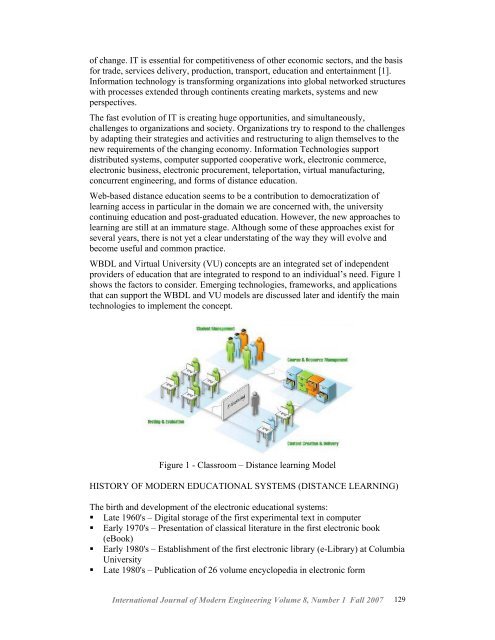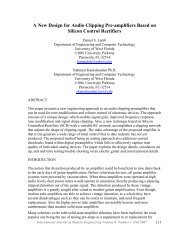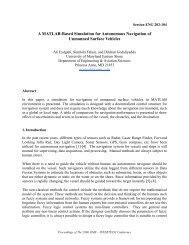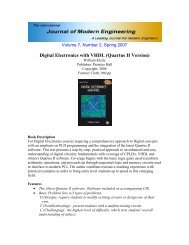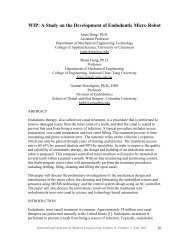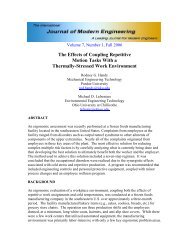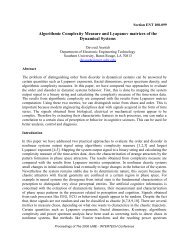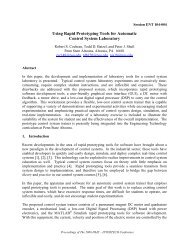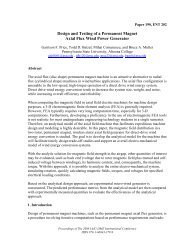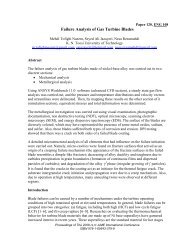Comparison Classical Method of Education and Modern Web ... - IJME
Comparison Classical Method of Education and Modern Web ... - IJME
Comparison Classical Method of Education and Modern Web ... - IJME
Create successful ePaper yourself
Turn your PDF publications into a flip-book with our unique Google optimized e-Paper software.
<strong>of</strong> change. IT is essential for competitiveness <strong>of</strong> other economic sectors, <strong>and</strong> the basis<br />
for trade, services delivery, production, transport, education <strong>and</strong> entertainment [1].<br />
Information technology is transforming organizations into global networked structures<br />
with processes extended through continents creating markets, systems <strong>and</strong> new<br />
perspectives.<br />
The fast evolution <strong>of</strong> IT is creating huge opportunities, <strong>and</strong> simultaneously,<br />
challenges to organizations <strong>and</strong> society. Organizations try to respond to the challenges<br />
by adapting their strategies <strong>and</strong> activities <strong>and</strong> restructuring to align themselves to the<br />
new requirements <strong>of</strong> the changing economy. Information Technologies support<br />
distributed systems, computer supported cooperative work, electronic commerce,<br />
electronic business, electronic procurement, teleportation, virtual manufacturing,<br />
concurrent engineering, <strong>and</strong> forms <strong>of</strong> distance education.<br />
<strong>Web</strong>-based distance education seems to be a contribution to democratization <strong>of</strong><br />
learning access in particular in the domain we are concerned with, the university<br />
continuing education <strong>and</strong> post-graduated education. However, the new approaches to<br />
learning are still at an immature stage. Although some <strong>of</strong> these approaches exist for<br />
several years, there is not yet a clear understating <strong>of</strong> the way they will evolve <strong>and</strong><br />
become useful <strong>and</strong> common practice.<br />
WBDL <strong>and</strong> Virtual University (VU) concepts are an integrated set <strong>of</strong> independent<br />
providers <strong>of</strong> education that are integrated to respond to an individual’s need. Figure 1<br />
shows the factors to consider. Emerging technologies, frameworks, <strong>and</strong> applications<br />
that can support the WBDL <strong>and</strong> VU models are discussed later <strong>and</strong> identify the main<br />
technologies to implement the concept.<br />
Figure 1 - Classroom – Distance learning Model<br />
HISTORY OF MODERN EDUCATIONAL SYSTEMS (DISTANCE LEARNING)<br />
The birth <strong>and</strong> development <strong>of</strong> the electronic educational systems:<br />
• Late 1960's – Digital storage <strong>of</strong> the first experimental text in computer<br />
• Early 1970's – Presentation <strong>of</strong> classical literature in the first electronic book<br />
(eBook)<br />
• Early 1980's – Establishment <strong>of</strong> the first electronic library (e-Library) at Columbia<br />
University<br />
• Late 1980's – Publication <strong>of</strong> 26 volume encyclopedia in electronic form<br />
International Journal <strong>of</strong> <strong>Modern</strong> Engineering Volume 8, Number 1 Fall 2007 129


